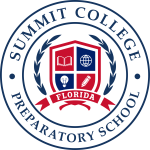The Role of Teachers in Gifted Education: Identification, Strategies, and Support
Professional Insight. Holistic Support. Lasting Impact.
Role of Teachers in Gifted Education: Teachers are at the forefront of identifying, nurturing, and supporting gifted students in the classroom. They are uniquely positioned to recognize the intellectual, social, and emotional needs of gifted students and implement strategies that will allow these students to thrive both academically and personally. However, the challenges associated with gifted education are significant, requiring educators to adopt flexible and differentiated teaching methods tailored to the unique needs of gifted learners.
Effective gifted education requires specialized training and professional development to equip teachers with the knowledge and tools necessary to support gifted students. Teachers must go beyond traditional teaching methods to create an environment that challenges, engages, and supports gifted students. This includes differentiated instruction, personalized learning, and strategies for meeting the social-emotional needs of gifted students. By employing these strategies, teachers can help gifted students develop their full potential, both academically and emotionally.
Identifying Gifted Students in the Classroom - Role of Teachers in Gifted Education
Effective gifted education begins with early identification. Teachers are often the first to notice the signs of giftedness in students, yet identifying giftedness is not always straightforward. Many gifted students do not exhibit their abilities in ways that conform to traditional academic expectations, and giftedness can be masked by social-emotional challenges or other learning differences.
Signs of Giftedness: Advanced problem solving, creativity, intellectual depth, and emotional sensitivity. Gifted students may set high personal standards and show unusual empathy or insight.
Challenges in Identification: Underachievement, cultural bias in testing, or learning differences may obscure true potential. Identification systems must account for diversity in gifted expression.
Role of Teachers: Observation, differentiated assessments, portfolios, and collaboration with parents and counselors ensure early, comprehensive identification.
Differentiated Instruction for Gifted Students
Gifted students require learning experiences that are flexible and tailored to their unique needs. Instruction must be intellectually stimulating and emotionally supportive, built around principles of personalization, acceleration, enrichment, and dynamic group interaction.
Personalized Learning: Adjusts pace, content, and delivery to match student strengths. ILPs guide instructional goals and support emotional well being.
Acceleration: Grade or subject advancement aligns with intellectual readiness and fosters motivation when carefully planned.
Enrichment: Provides advanced learning through independent projects, creative expression, and research-based inquiry.
Flexible Grouping: Encourages collaboration with peers based on interest or ability. Group structures promote interaction, leadership, and shared discovery.
Supporting the Emotional and Social Needs of Gifted Students
Gifted students often face complex emotional and social challenges. Their heightened sensitivity and intense focus can result in anxiety, perfectionism, or social disconnection. Educators must support not only academic achievement but emotional well being.
Emotional Sensitivity: Responsive classrooms should include SEL curriculum and foster resilience, empathy, and student voice.
Perfectionism: Growth mindset strategies encourage risk-taking and reflection. Teachers should normalize mistakes as part of learning.
Social Isolation: Structured opportunities for engagement such as academic clubs or collaborative projects reduce isolation and enhance belonging.
Peer Interactions: Group activities, leadership roles, and classroom dialogue support social learning and emotional maturity.
The Role of Teachers in Advocating for Gifted Education
Educators must serve as advocates for gifted programming, ensuring these learners are not underserved in policy and practice. This includes promoting adequate funding, teacher training, and curricular innovation across the school or district level.
Advocacy for Resources: Teachers should recommend enrichment opportunities, mentorship, and advanced coursework to leadership teams and families.
Professional Development: Ongoing training should address equity, identification, social emotional development, and instructional differentiation.
Collaboration: Working with families, counselors, and administrators ensures consistency between classroom strategies and long term student goals.
Conclusion: Empowering Teachers to Support Gifted Students
The teacher’s role in gifted education is both instructional and transformative. Through careful identification, thoughtful differentiation, and emotional support, educators create the foundation for gifted students to thrive. Teachers who are well trained and supported can elevate the learning experience and ensure that gifted students reach their highest potential academically, socially, and emotionally. Their advocacy and daily practice are vital to creating an inclusive, challenging, and responsive learning environment that celebrates the full range of student abilities.
